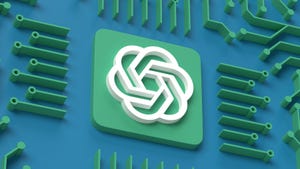
Insight and analysis on the data center space from industry thought leaders.
Using Virtualization Technologies to Deliver Mobility SolutionsUsing Virtualization Technologies to Deliver Mobility Solutions
A good mobility and Bring Your Own Device (BYOD) initiative, coupled with virtualization, can create a flexible environment capable of growing with the needs of the user – and helping the organization reach its goals, writes Bill Kleyman of MTM Technologies.
August 1, 2013
Bill Kleyman is a virtualization and cloud solutions architect at MTM Technologies where he works extensively with data center, cloud, networking, and storage design projects. You can find him on LinkedIn.

BillK_MTM_sm
BILL KLEYMANMTM Technologies
Virtualization has created a truly scalable environment capable of managing bigger workloads and more users, which is a phenomenon built around efficiency and user density. One of the biggest trends in the current market is IT consumerization, also known as Bring Your Own Device, or BYOD. With the increasingly mobile workforce, administrators are being asked to support more devices as more users begin to use their own machines or devices to access corporate data.
In many cases, allowing users to bring in their own devices will not only create a happier user – it’ll make for a more productive workforce. In working with BYOD, IT administrators and managers must still control the information being delivery as well as the experience. So now the question becomes clear: Do we manage the endpoint or just the workload?
With virtual environments, managers are actually able to centralize the application, data and even desktop delivery process. As a note, no BYOD initiative should ever be a "free-for-all" open environment. There's still a need to put policies and controls in place to ensure that only supported devices are allowed on site. Once that’s established, there are three solid ways (outside of server virtualization) to "virtualize" and efficiently deliver information to the end-user.
Application virtualization. One great way to delivery applications to a BYOD endpoint is to centralize an application, virtualize it, and delivery it via a portal or local endpoint agent. This way the information and data are all stored at the central data center and engineers only have to worry about the delivery. Users can suspend their sessions, change over to a new device, and pick up work exactly where they left off. Solutions from Microsoft App-V, VMware ThinApp, and Citrix XenApp make the application virtualization and delivery process much easier. These apps can be delivered in a secure manner with granular control over who sees these apps and how they are assigned.
Desktop virtualization. A newer trend, desktop virtualization is another great way to deliver workloads to the end-user. Much like application virtualization, the desktop is stored and virtualized at the data center level and then delivered to the appropriate end-point. When working with VDI, it’s important to identify the end-point and understand the resource needs both at the data center level and in between. Improper resource allocation can lead to poor performance and latency. Otherwise, in a solid deployment, VDI for users both onsite and remote can have very powerful benefits. Applications can be installed directly into the master image or combined with an application virtualization solution. In that scenario, the desktop image will remain very light, while pulling virtual applications as needed from the data center. Desktops can be delivered, controlled and fully managed directly from the data center. And, just like with application virtualization, users can suspend their desktops, relocate to a new device or location – and pick up exactly where they left off.
User virtualization. An ever important process of the application and desktop delivery process is user management. This is where user virtualization can really come in to help. Products, such as AppSense for example, strive to abstract the user layer completely from applications, devices, and location. This means that user settings follow the user regardless of what physical device they are using or what resource they are trying to access. This allows settings such as folder redirection, printers, and personalization to always stay with the user. No more bloated or corrupt profiles to deal with since the information will be stored within a SQL database. Furthermore, administrators can assign application-specific settings for users. For example, an administrator can gray out entire menu items within an application based on which user is accessing the app, from which location and on which device. This type of granular security not only creates a more resilient environment, it will also improve the end-user computing experience.
Managing the environment at the data center level creates for a very agile infrastructure. Administrators don’t have to worry about the end-point, outside of just the client software, to deliver an excellent end-user experience. This creates a secure infrastructure where if a personal device is lost – the information is still retained within the data center. A good mobility and BYOD initiative, coupled with virtualization, can create a flexible environment capable of growing with the needs of the user – and the organization.
Industry Perspectives is a content channel at Data Center Knowledge highlighting thought leadership in the data center arena. See our guidelines and submission process for information on participating. View previously published Industry Perspectives in our Knowledge Library.
About the Author
You May Also Like









